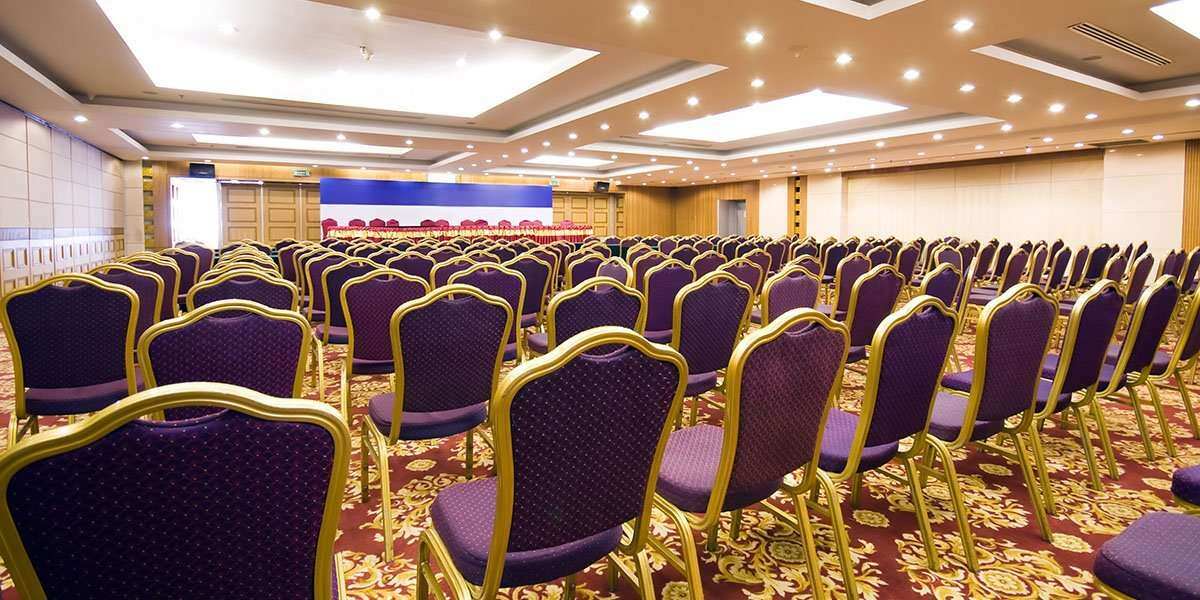1. Outline the objectives of your event
Before you can map out your journey, you must first know your final destination. So it is with travel as well as with determining your event technology needs. Outlining your event objectives forces you to create and prioritize the goals you wish to accomplish prior to, during and after your event. What's more, this list also defines the top-line criteria you will use when considering which pieces of event technology you will seek out. "This activity can help identify if there are needs for networking or education or a launch of something new," says Sarah Sebastian, owner of Rose Gold Collective event design.2. Research your audience and the type of experience they expect
Many event technologies (like event planning and productivity applications) help event managers and staff track all the behind-the-scenes details, while others (like event registration software and event apps) are built to streamline and enhance the attendee experience. And while you must consider which technologies will help you achieve your event's goals, you must also consider how they will affect your target audience. "What is your audience looking for with regard to their desired experience at your event?" asks Gary Weis, CEO of event video innovator Sonic Foundry. "Once you understand your audience and their expectations, you can start evaluating the technology features and solutions which will provide the greatest impact." A great way to learn this is through a simple online survey that you email to past attendees or your marketing list.3. Understand how tech savvy your audience is
A critical factor in evaluating your audience is to properly assess how tech savvy they are. Because there's nothing worse than subjecting a crowd of luddites to virtual reality goggles, or, conversely, making a throng of Millennials endure a speaker locked behind a podium using PowerPoint. "Knowing the crowd and matching the right technology solution to them is always important for success," says Sarah Sebastian. "For example, if your crowd has high tech expectations, it's important to up the engagements and bring in new solutions such as virtual reality or artificial intelligence." "Age demographics is a big issue to consider here," adds Karen Shackman, President of Shackman Associates New York. "If your attendees are primarily Millennials, they are going to want technology throughout the event with features like social media walls and charging stations."4. Base your tech choices on need, not bells-and-whistles
When I was 10 years old, I drank a 2-liter of Coke and ate a large bag of potato chips in one sitting, then felt awful the rest of the day. To which my mom said (and I'm paraphrasing here), "Just because you had access to all that stuff didn't mean you had to eat it all." Same goes for event technology. Just because there's lots of cool stuff you can buy and use doesn't mean you should implement it all. "You should source event technology based on need, not availability," asserts Jody-Ann Rowe, owner of the Event Certificate. "One of the first questions I ask when presented with a new app, software or program is what value does it add. If you cannot provide a clear reason for how your processes will be improved by this new technology, chances are it is a trending product rather than one that will be essential to you."5. Identify your challenges and problems at past events
Often your biggest needs may involve addressing a shortcoming or problem encountered in a previous event. "I always ask myself what problem or process will this solution help make more efficient or fix," says Cindy Lo, owner of Austin's Red Velvet Events. This is where it's critical that you always conduct a "lessons learned" session after every event to identify snafus or areas for improvement. There may also be issues you weren't aware of, so it's important to ask your attendees their opinions via a post-event feedback survey. Once you have your lessons learned and feedback data, you can more easily focus in on the event tech tools you need to solve those past problems.6. Calculate your budget and any cost/time savings you can achieve using technology
Reliable, full-featured event technology usually costs something (FYI .. free tools are usually worth the price you pay for them), so from the outset you should calculate how much you want to budget for your tech spend. Three important things to consider when creating your event technology budget are:- How much money the technology will save you in other areas.
- How much time the technology will free up so you and your team can focus on other matters.
- How much value the technology will add to your event in the eyes of attendees.
7. Make sure you are comparing apples to apples
Very few event tech solutions align perfectly when it comes to their feature sets and offerings, so this makes it difficult to compare solutions straight-up when you are shopping them. However, you really don't want tech providers to set the parameters of your search. Instead, you should create a spreadsheet with the functionality, features and tools you need in order to accomplish your primary goals. From there, you can add each event technology solution as a new line item and indicate which of your boxes each solution ticks off as well as additional features the solution offers.8. Consider tools your audience/community already uses
For great ideas on the best event tech tools to implement for your events, you may not need to look beyond the tools your target audience is already using. "Honestly, I am always interested in whatever tools the community already uses," says Thursday Bram, event pro and founder of Urgency Inc. "If you want to work with a particular audience, you need to learn their toolset. For example, setting up a Slack chat for your conference won't improve it if you're trying to reach audiences who don't rely on chat or IM already." This is another essential question to ask your target audience when you survey them, as it may take less effort to implement a tech tool that your audience doesn't have to adapt to because they are already familiar with it.9. Upgrade the tech you already have before buying new tech
The draw of diving into a shiny new application with enticing new features and clean layouts can be hard to resist. But sometimes those cool new tools aren't going to add value to what you are trying to accomplish or even address your existing challenges. "I always choose upgrades over add-ons," says Jody-Ann Rowe. "There are many amazing tools and applications on the market right now and it can feel like you need to have them all to be successful. As a result of this, event professionals can end up with multiple technologies all focused on accomplishing individual processes rather than one or two comprehensive programs that solve most of their needs. So instead of purchasing new programs and apps as they are released, try evaluating your existing programs to see if an upgrade would solve your problem rather than adding an additional tool that will need to be maintained."10. Determine how flexible you are willing to be
Regardless of the event technology you choose, you will inevitably have to adapt to it to some extent. Most applications and hardware these days are designed to minimize the learning curve and get you onboard quickly. However, you and your team will still have to get used to the user interface, features, capabilities, limitations and the sometimes-endearing-sometimes-not quirks of the technologies you choose. Broadly speaking, event technologies are usually designed with one or more of these levels of flexibility:- Level 1 - Configuration - Lets you adjust settings and add your own visual touches and branding.
- Level 2 - Customization - Lets you personalize the interface more and add data fields.
- Level 3 - Custom development - The tech provider takes your input and develops new code/features so the application meets your very specific requirements.
11. Minimize the number of tech vendors and/or applications you use
When you increase the number of tech tools and vendors you use, the number of variables that you have to stay on top of also increases, which can make troubleshooting and fixing issues more difficult. "You should really find a vendor or supplier that can bring the most solutions to one platform," says Gary Weis. "Every time you host an event or conference, you are basically playing Russian roulette because at some given point, through the duration of your event or conference, something may go wrong. When you have more than 10 suppliers, you have to go and backtrack with all of the suppliers to figure out at which point in the execution something went wrong. Troubleshooting is so much easier when you have a single technology partner." This is why many event professionals opt for all-in-one event software applications or providers that can offer a full range of event technology tools in one platform, as this removes a fair amount of variability and uncertainty from the equation.12. Consider solutions that have attendee engagement and marketing components
I call this the "might-as-well" approach to evaluating technology. Maybe you are considering a few event tech applications that meet your needs, but one has additional features for other aspects of planning and running your event. If all the must-have features and pricing are equal, you might as well opt for the solution that provides you with those additional features. As far as extras go, any platform or tool that can help you enhance attendee engagement or boost your marketing performance is worth your consideration. "The event of the future leverages technology to support engagement for in-person and remote audiences before, during and after the event," says Gary Weis. "And more than ever, event planners are required to create content marketing strategies that encapsulate ROI, metrics, video capture and more." With all these demands facing you, it always helps to have extra features that streamline and simplify these efforts for you.13. Choose providers that innovate and solutions that can grow with you
When vetting event technology providers, two questions you absolutely must ask are:- How often do you update your technology and develop new features?
- Will your solution be able to accommodate me as my needs grow?








